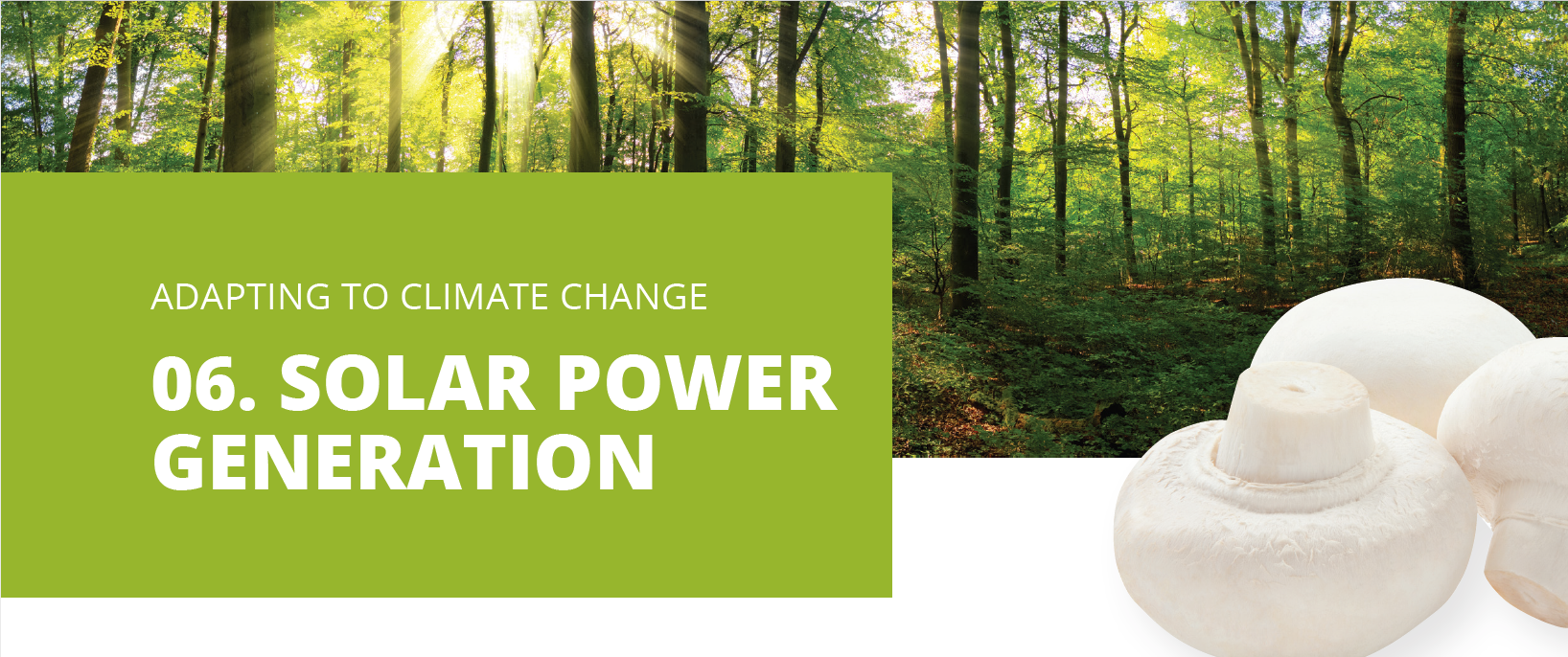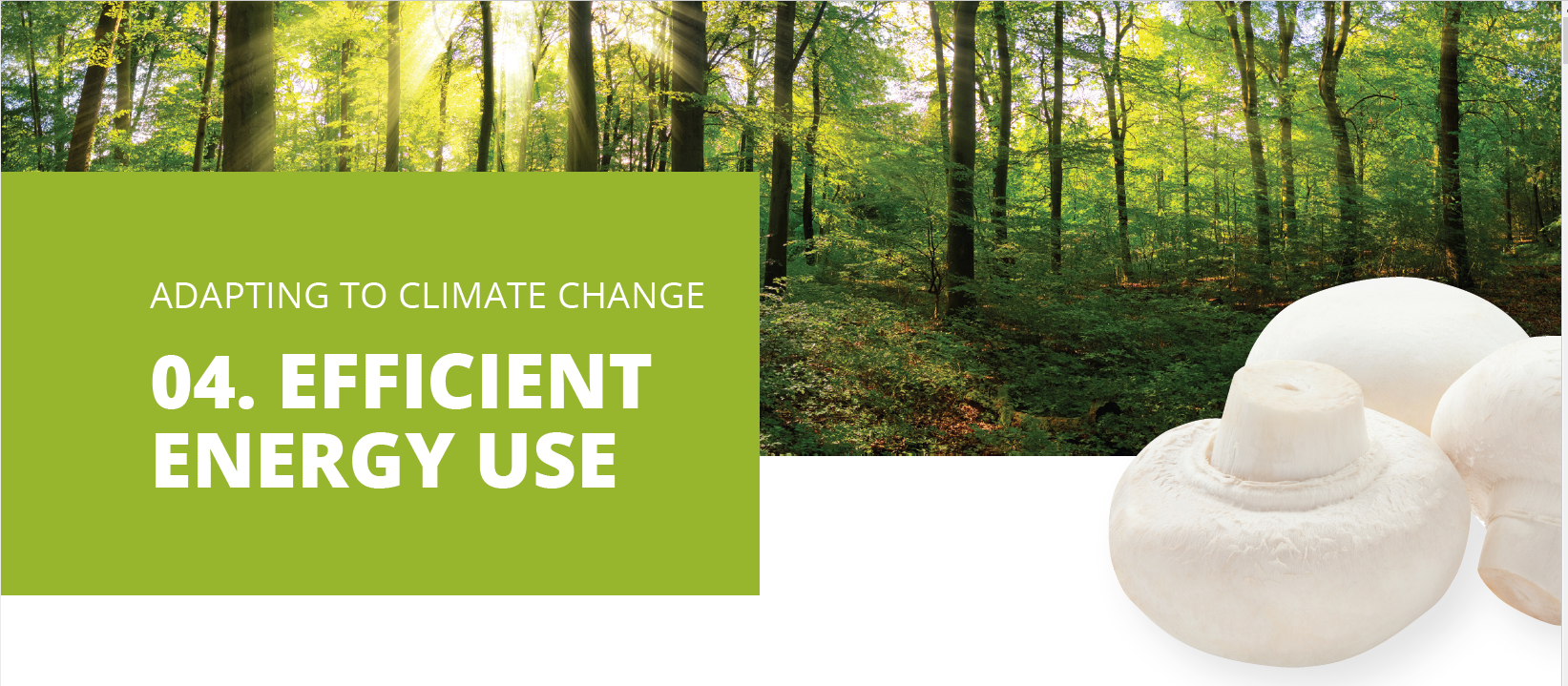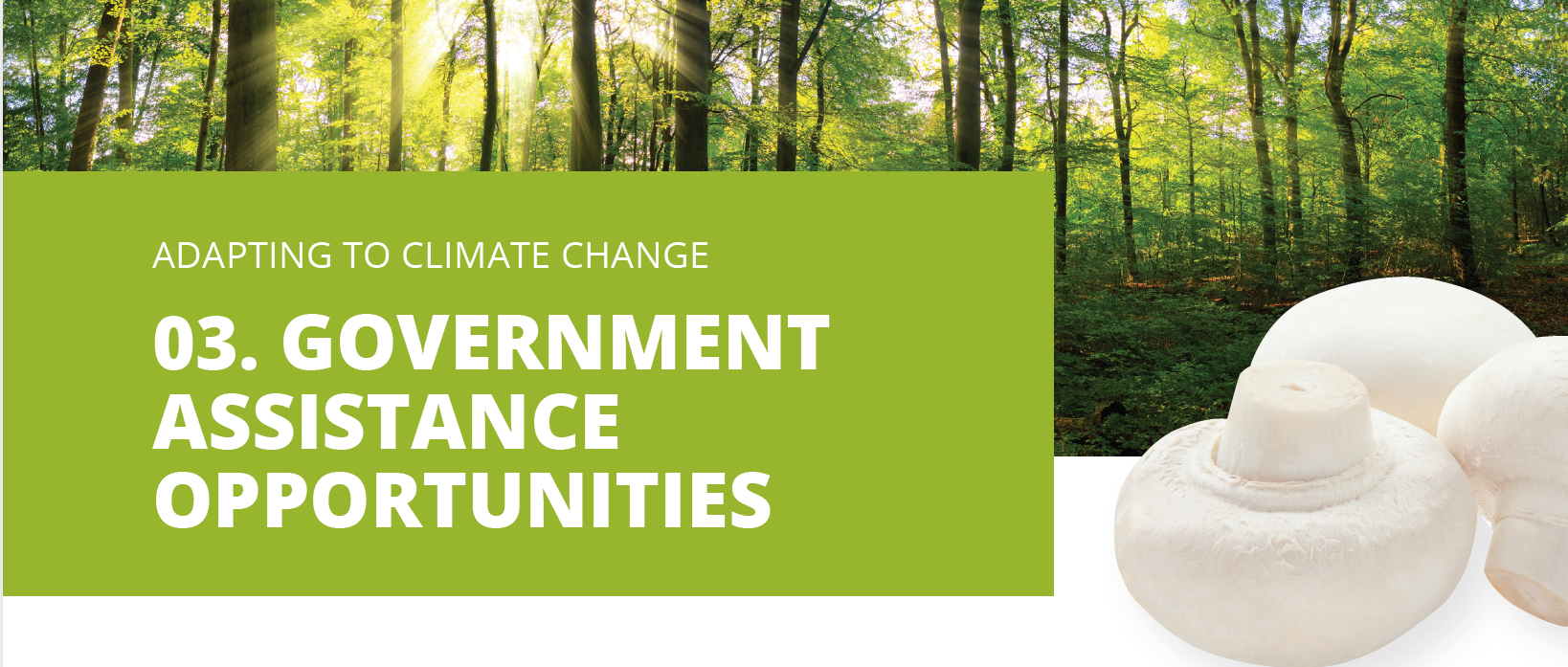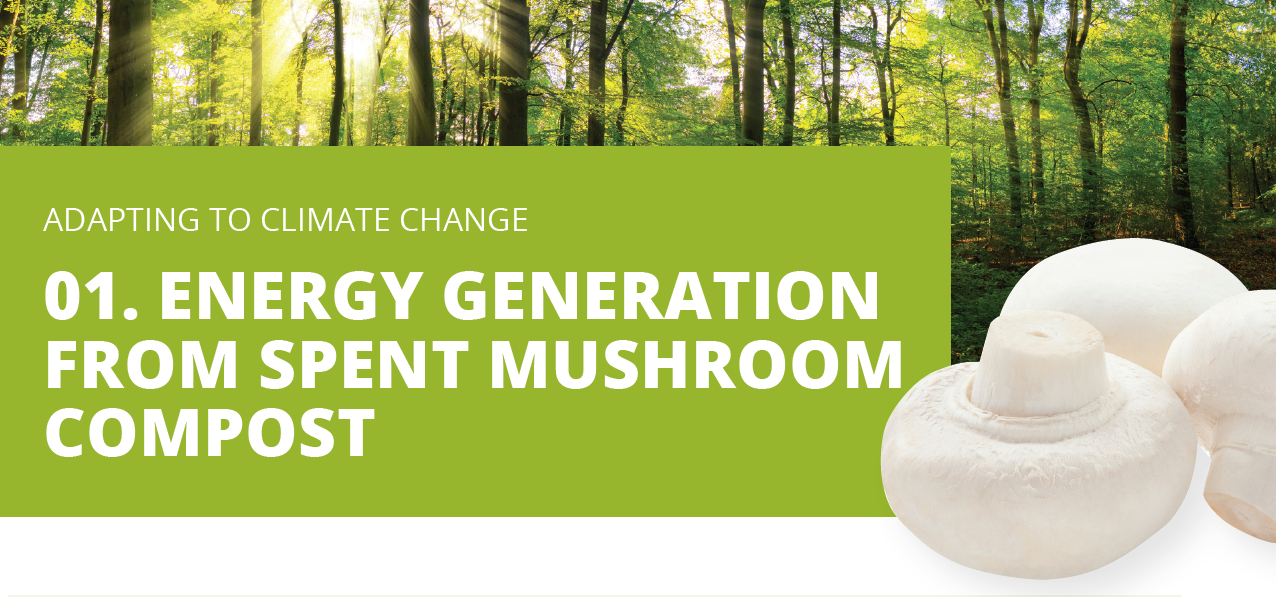The Future of Casing
As the future of imported casing material is uncertain, a recent Hort Innovation levy-funded project reviewed the viability of existing alternatives and new research into future materials.
As the future of imported casing material is uncertain, a recent Hort Innovation levy-funded project reviewed the viability of existing alternatives and new research into future materials.
A life cycle analysis of the mushroom industry
It’s one thing to claim sustainability, and quite another to prove it. A new R&D levy-funded project is bringing ‘life cycle thinking’ to the Australian mushroom industry, which will highlight the strengths and weaknesses in mushroom sustainability across the industry. With recent media attention and a new investigation by the ACCC exposing greenwashing, it is more important than ever to understand the real impact of a business and the effectiveness of any sustainability measures.
It’s one thing to claim sustainability, and quite another to prove it. A new R&D levy-funded project is bringing ‘life cycle thinking’ to the Australian mushroom industry, which will highlight the strengths and weaknesses in mushroom sustainability across the industry. With recent media attention and a new investigation by the ACCC exposing greenwashing, it is more important than ever to understand the real impact of a business and the effectiveness of any sustainability measures.
Exploring the potential of spent mushroom substrate for sustainable agriculture
To maintain consumer appeal and a competitive edge, business must strive for that magical triple bottom line of social, economic and environmental sustainability. Striking that balance is an ongoing challenge due to a fickle global economy and increasingly unpredictable weather patterns.
To maintain consumer appeal and a competitive edge, business must strive for that magical triple bottom line of social, economic and environmental sustainability. Striking that balance is an ongoing challenge due to a fickle global economy and increasingly unpredictable weather patterns.
The power of mushroom waste
Growing mushrooms inevitably generates waste. There is spent compost, cut stems, unsaleable mushrooms and drain water all to dispose of. Finding ways to turn so-called waste into an income generating resource has been a puzzle, but one where there may now be solutions.
MU17007 - Feasibility of compost substrate alternatives for mushroom production
Key research provider: Murrang Earth Sciences
In 2019, this investment explored alternative sources of carbon for use in mushroom compost production by looking at the physical and chemical properties, compost quality, relative benefits and potential risks of a range of possible carbon sources. Wheaten straw is currently the most common carbon source used in mushroom compost production but is predicted to become more difficult to acquire and more expensive over time, so this investment was all about future-proofing the mushroom industry.
The research team investigated alternative carbon sources that could partially or completely substitute for wheaten straw in mushroom compost substrate, with the aim of improving business security for mushroom growers.
The research team conducted a literature review, industry consultation, and discussions with global researchers to develop a list of potential alternative carbon sources. Each was considered for its physical and chemical characteristics, plus its effects on composting and mushroom yields. Other assessment factors included consistency of supply volumes, purchase price, transportation, health and safety issues, and compliance to regulations and quality standards.
Four carbon sources were identified with the appropriate physiochemical properties plus viable cost and availability, which were wastepaper, forestry waste, corn stover, and sugar bagasse.
Both born stover and sugar appear to be ideal for use as a substitute for wheaten straw, however transport distances may pose a logistical hurdle. The use of wastepaper (either shredded or soft-mixed) in composting is limited by its physical properties, however it could replace around 20 per cent of wheaten straw in compost without negatively impacting mix porosity.
The researchers found that wheaten straw has unique properties that are difficult to replicate, and materials with good properties for composting that were also abundantly available were difficult to identify. The alternative carbon sources are also subject to similar price-competition due to their use in other industries, especially the feedstock industry.
The research team shared its results with the mushroom industry, as fully investigating the potential use of other carbon sources for complete or partial substitution needs to consider what changes to the conventional production system are required, including composting systems and culture practices for growing A. bisporus.
Project outputs
Compost substrate alternatives being considered, published on page 22 of the Australian Mushrooms Journal, Edition 3 2019
Feasibility of compost substrate alternatives: a project update, published on page 30 of the Australian Mushrooms Journal, Edition 2 2020.
MU17008 - Understanding and managing the impacts of climate change on Australian mushroom production
Key research provider: Applied Horticultural Research
Climate variability and change present a range of potential risks to the technical and economic viability of Australian mushroom growers, compost producers and support industries. This short project, which ran from 2019 to 2020, identified climate-related risks across production regions, now and into the future. It also worked with industry on a regional basis to look at how to manage these risks and how to reduce greenhouse gas emissions to help mitigate them, while providing education on how improving environmental performance can be used to a marketing advantage.
The research team began by performing a desktop review to summarise the latest science of climate change and the expected impacts that may affect the mushroom industry. It reviews how mushroom and compost producers in Australia and globally are adapting to the expected impacts of climate change, as well as reducing their environmental impact. The review is available here.
Identifying potential risks
The project team consulted 20 mushroom growers, representing 73 per cent of Australian production and seven composters. Each participant was asked about their climate risk preparations, as well as new strategies to manage climate-related impacts on their businesses. From these discussions, several key risks were identified (as below) and a summary document can be viewed here.
Availability of peat for casing
Availability, cost and quality of wheat straw for compost
Availability and quality of manure for compost
Impacts of temperature extremes on compost production, growing and transport
Energy – reliability of the power grid and costs of electricity and gas
Government emissions control policies
Water availability, cost and quality for compost production and mushroom growing
Pests and diseases, increased fly activity and the spread of disease, weed moulds and Trichoderma.
Case studies for adaptation and mitigation
The project team reviewed adaptation and mitigation options that are currently in use worldwide and developed six case studies outlining opportunities for the mushroom industry to consider, available to download here.
Recommendations for industry
The following recommendations are made to address gaps in knowledge and future R&D requirements. Together with the adaptation and mitigation options provided, the mushroom industry can reduce future climate change risks.
Identify and test alternative casing materials
Optimise compost made from lower quality, shorter straw and different manure sources
Evaluate the use of soil moisture sensors for managing irrigation in mushroom growing
Develop a smart cookout approach using qPCR disease identification to determine pathogens present and determine when cookout is needed.
Understand cookout timing and temperatures required to control specific diseases in growing rooms.
Investigate likely changes in mushroom disease, including smoky mould
Investigate the technical feasibility and marketing opportunities of carbon neutral mushrooms
Establish a solar buying group for mushroom producers
Pilot biogas energy generation on-farm.
06. SOLAR POWER GENERATION
Part of the Hort Innovation project MU17008 - Understanding and managing the impacts of climate change on Australian mushroom production, this is the sixth in a series of six factsheets
05. EFFICIENT USE AND RE-USE OF WATER
Part of the Hort Innovation project MU17008 - Understanding and managing the impacts of climate change on Australian mushroom production, this is the fifth in a series of six factsheets
04. EFFICIENT ENERGY USE
Part of the Hort Innovation project MU17008 - Understanding and managing the impacts of climate change on Australian mushroom production, this is the fourth in a series of six factsheets
03. GOVERNMENT ASSISTANCE OPPORTUNITIES
Part of the Hort Innovation project MU17008 - Understanding and managing the impacts of climate change on Australian mushroom production, this is the third in a series of six factsheets
02. ALTERNATIVE CASING MATERIALS
Part of the Hort Innovation project MU17008 - Understanding and managing the impacts of climate change on Australian mushroom production, this is the second in a series of six factsheets
01. ENERGY GENERATION FROM SPENT MUSHROOM COMPOST
Part of the Hort Innovation project MU17008 - Understanding and managing the impacts of climate change on Australian mushroom production, this is the first in a series of six factsheets
Spent mushroom compost as casing soil with Mohammad Mirzadeh
Mohammad Mirzadeh discusses his experience recycling spent compost for use in casing materials
Climate change and the Australian mushroom industry – risk, adaptation and opportunities
Climate change and its impact are back in the world debate. Although mushrooms would seem less affected by climate change than other crops – being protected from extremes of weather, the industry remains vulnerable to climate-related risks.
There are also climate-related opportunities to reduce costs and improve the environmental performance of the Australian mushroom industry. E.g., onsite energy generation, new growing substrates and water recycling. Adopting new technologies can reduce costs, sidestep production limitations, and enhance the industry's “green” image.
Join Dr Jenny Ekman, Liam Southam-Rogers and Adam Goldwater who will explain why what’s good for the environment, can also be good for your business when they summarise the outcomes of the levy funded project “Understanding and managing the impacts of climate change on Australian mushroom production”.
Recycled organics as an alternative to peat in mushroom casing
The Australian mushroom industry uses approximately 25,000 tonnes of peat casing every year. Mostly imported from Europe or Canada at a cost of $300 per tonne, peat is both an expensive and limited resource.
Compost made from recycled organics is locally available and cheaper than peat.
Join Adam Goldwater from Applied Horticultural Research for a webinar where he will present the results of the recent trials of commercially viable white mushroom crops cased with blends of composted recycled organics and peat.
This is a Waste Less Recycle More initiative funded from the waste levy.




























